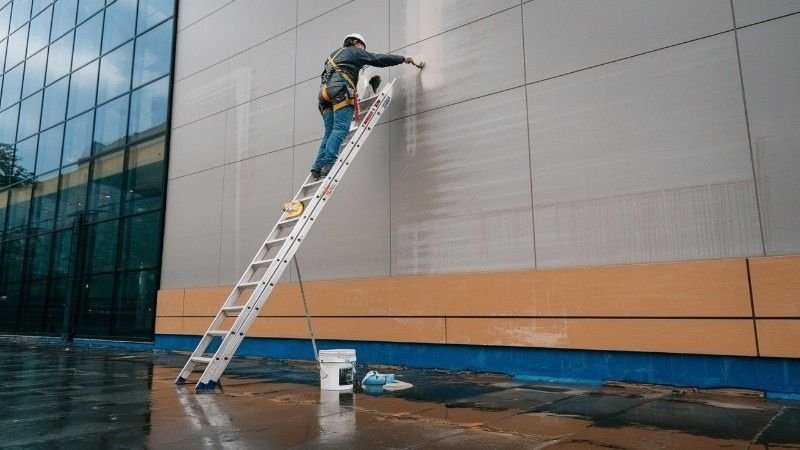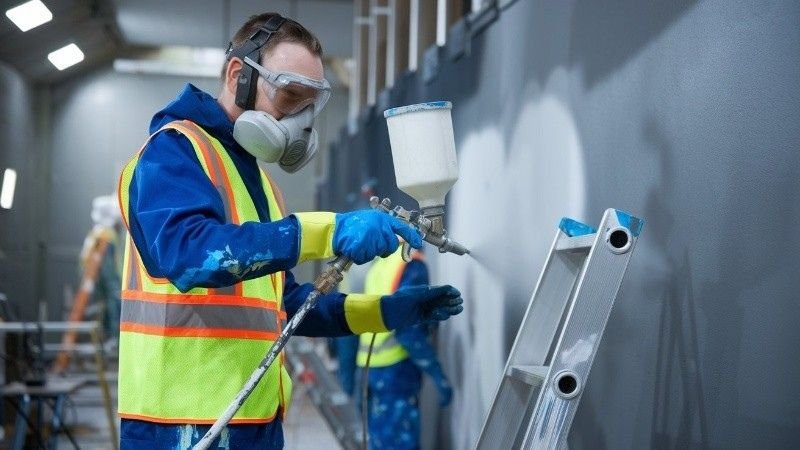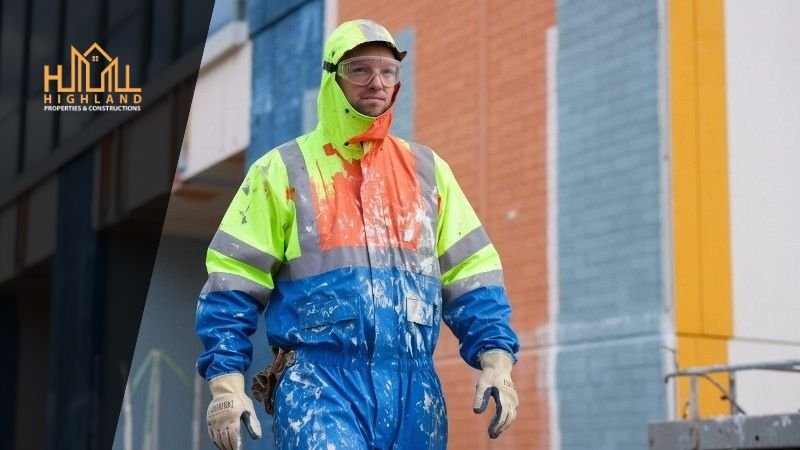Essential Safety Tips for Paint Work
While a rewarding and satisfying task, painting can also impose equally sombre hazards on a professional painting expert and an unskilled painting enthusiast handling a DIY project. However, paying attention to safety details can save you from serious mishaps. Thus, safety must always be your top priority, whether you are revamping a room with a fresh coat of colour or tackling a larger painting project. The painting appears straight but involves several high-level risks, such as fire ignition, chemical toxicity, Physical injury and environmental pollution. This blog will unveil all the potential risks and safety measures for a safe painting experience.
Risks Involved in Paint Work

There is a lengthy list of hazards involved in the paintwork, but with careful consideration of safety measures, these risks can easily be mitigated.
Chemical and Lead Exposure
Paints contain many harsh chemicals, as well as lead, in some cases. Our skin’s exposure to these harmful chemicals can also cause various skin-related allergies and eye irritation issues. Some paints are lead-based, which can pose a severe threat if inhaled accidentally in case of insufficient ventilation.
Also Read: How to Maintain Your Painted Walls
Health Risks
Many paints and primers contain high VOC levels that pollute indoor air quality with airborne particles. Many oil-based paints use oil and synthetic chemicals as solvents. These chemicals evaporate into the air and can cause breathing problems due to the fumes and vapour inhalation.
Falling and Tripping Risks
Painting of high-rise buildings can have severe implications of physical injury if any falling mishap occurs on the site. Besides falling from heights, the risk of tripping from the ladders or small heights is always there.
Fire Ignition Risks
Paints and primers contain flammable components that can cause fire hazards if these are not managed carefully. To mitigate fire hazards, keep a fire extinguisher with you in case of emergency conditions.
Electrical Hazards
Sometimes, paintwork is sprayed beside places with electrical instruments, fixtures, or appliances. Painting such places without careful consideration can be risky as the water-based paints can pose a risk of electrical shock.
Environmental Hazards
If the extra painting material is not discarded or disposed of properly, this paint waste and spills can have environmental impacts such as smog.
Safety Tips for Paint Work
1- Use Personal Protective Equipment

To ensure your safety, wear appropriate protective gear, including gloves, a high-quality respirator, a fall arrest system, a fire extinguisher, safety goggles, etc. Gloves protect your skin from allergies if the harmful chemicals of paint come in contact. A high-quality respirator filters the airborne particles and stops harmful chemicals and fumes from entering your respiratory system. Moreover, Google protects your eyes from irritation. Wear long sleeves and boots to avoid any skin contact.
2- Good Ventilation
Ensure the area you’re painting is well-ventilated. Turn on the fans and open all of the windows and doors. Increase air movement, especially when working with oil-based paints and strong solvents. Good ventilation helps disperse harmful fumes and reduces the risk of respiratory issues.
3- Use Ladders Carefully:
Use ladders or scaffoldings to paint the surfaces at different heights. Ensure that you place the ladder on a levelled surface to avoid tripping the ladder and to keep yourself well-balanced and comfortable.
4- Dispose of the Waste Material Responsibly:
Instead of leaving the extra painting material uncovered and untreated, discard and dispose of it properly to avoid environmental damage and pollution. For this purpose, you may contact any waste disposal services.
5- Store Extra Paint Material Carefully:
After using the required product:
1- Store the remaining paints and primers in a clean and dry place.
2- Avoid keeping it at locations that are usually moist and hot.
3- Follow the preserving instructions given by the manufacturer on the product.
6- Follow Usage Instructions:
Remember to read all the labels, user instructions, ingredients, and cautions before using the paint and paint primers to understand the product’s security and suitability.
7- Electrical Safety
Turn off the power to avoid electric shocks while working around the electrical fixtures. Ensure that no electrical flow goes through using a voltage tester before starting the task.
8- Keep a First Aid Kit:
Keep an emergency kit that includes antiseptics and bandages readily available to keep the situation in hand. You can use sprints for minor injuries.
Conclusion
Painting is a rewarding and transformative activity, but it comes with its own set of safety challenges. Following these essential safety tips may minimize risks and guarantee a successful and secure painting experience. Remember, preparation and vigilance are imperative. Equip yourself with the right protective gear, handle paints and solvents responsibly, and always prioritize safety in your work environment. With the right approach, you can enjoy the satisfaction of a beautifully painted space while keeping yourself and your surroundings safe.
Safety Tips for Paint Work – FAQ
Q1- What are the paint safety precautions?
Ans: Use personal protective equipment (PPE). Cover all the body parts to avoid skin and eye irritation. Use a good quality respirator to avoid harmful chemicals. Keep good ventilation, fire extinguisher, and first aid kit at your workplace.





Leave a Reply